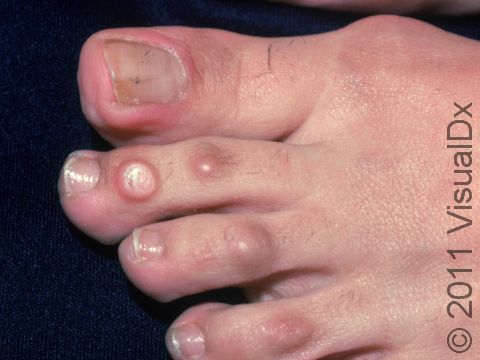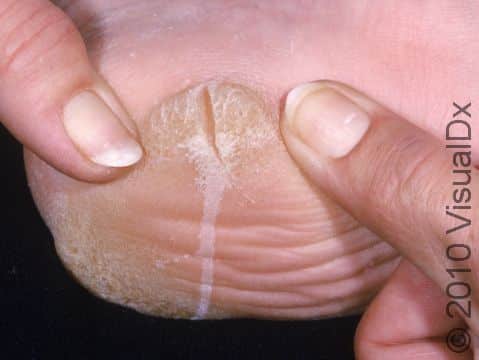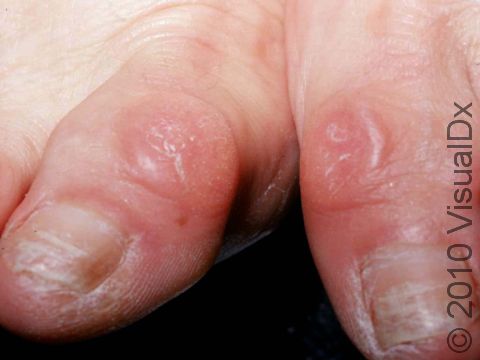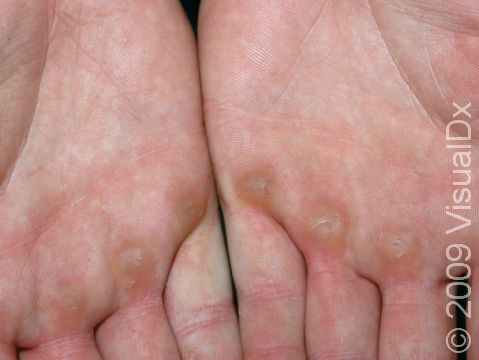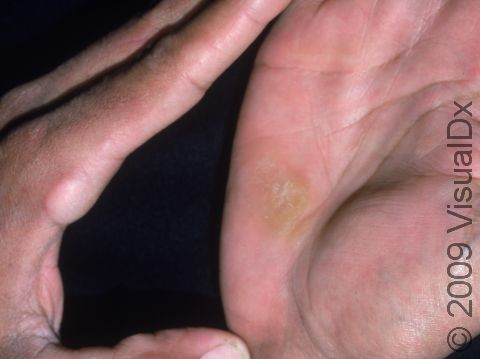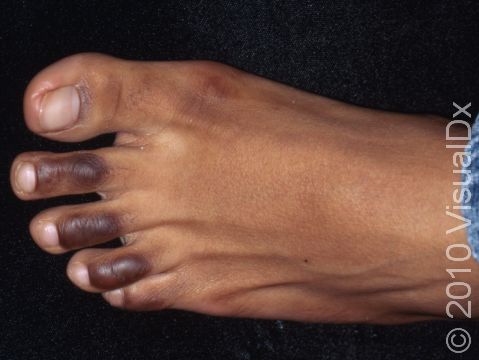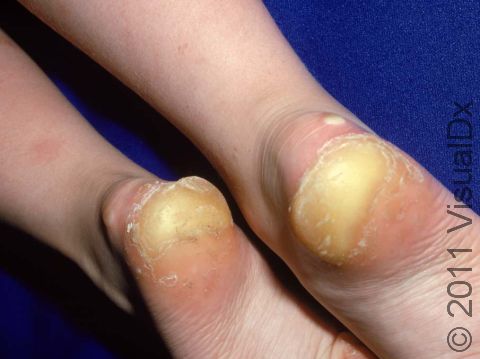Callus
A callus (tyloma) is a thickening of the skin that occurs in response to excessive, repeated shear or friction forces, commonly due to constant rubbing of the skin. Calluses are similar to corns, but calluses occur when abnormal forces are exerted over a larger area. Certain deformities of the feet, such as crookedness of the toes, may predispose to the development of calluses. Calluses may cause pain, typically a burning sensation. Excessive weight bearing and certain types of shoes are often contributing factors.
Who's At Risk?
Calluses may occur in all people with the exception of non-weight-bearing infants.
Signs & Symptoms
Calluses are most frequently located on the feet and sometimes on the hands. They usually are located next to bony prominences.
Self-Care Guidelines
- Avoidance of the repetitive forces causing calluses, such as altering shoe style, is the best method of prevention.
- Gentle paring with an emery board or a pumice stone may help to decrease the thickened skin. A soft fabric, such as felt, should be applied after paring to protect the underlying skin. Or, shoe pads that go inside your shoes should be used to help relieve the pressure so foot calluses can heal.
Treatments
Your physician may:
- Pare the callus with a scalpel.
- Prescribe a topical medication such as urea to help dissolve thickened skin.
- Refer the patient to a podiatrist, a health care provider specializing in foot care.
Visit Urgency
Calluses do not require medical intervention, but seek evaluation if they become bothersome. Diabetics should pay careful attention to their feet given the risk of development of diabetic ulcers on the feet.
Trusted Links
References
Bolognia, Jean L., ed. Dermatology, pp.1399. New York: Mosby, 2003.
Freedberg, Irwin M., ed. Fitzpatrick’s Dermatology in General Medicine. 6th ed, pp. 1247. New York: McGraw-Hill, 2003.
Last modified on October 10th, 2022 at 7:24 pm

Not sure what to look for?
Try our new Rash and Skin Condition Finder
